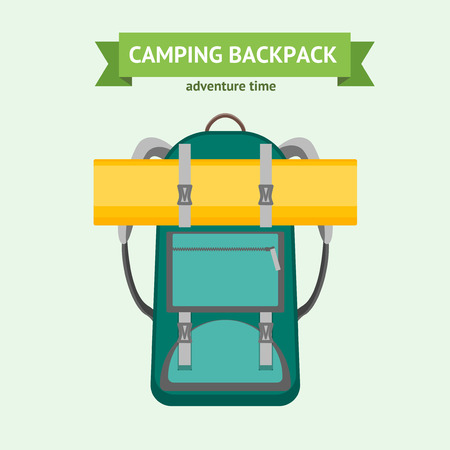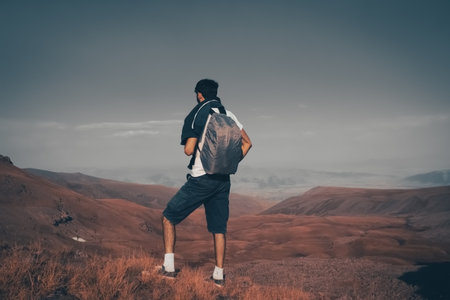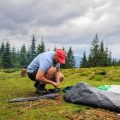1. Shelter and Sleeping Essentials
When youre just starting out with camping, having the right shelter and sleep setup can make or break your experience. A good nights rest is crucial for enjoying your outdoor adventure, so let’s break down the basics you’ll need to stay warm, dry, and comfortable.
Tents: Your Home Away from Home
For beginners, look for a tent that’s easy to set up, weather-resistant, and durable. Dome-style tents are popular because they offer a balance of space, stability, and ease of use. If youre car camping, weight isn’t as much of an issue, but if you plan on hiking to your campsite, consider a lightweight option.
What to Look For in a Tent:
| Feature | Why It Matters |
|---|---|
| Weather Rating | Choose a 3-season tent for spring through fall; it handles rain and light wind well. |
| Capacity | Select based on number of people + gear space (e.g., a “2-person” tent fits two snugly). |
| Ease of Setup | Look for color-coded poles and simple instructions to save time at camp. |
| Ventilation | Mesh panels reduce condensation and keep air flowing on warm nights. |
Sleeping Bags: Stay Warm All Night
A quality sleeping bag helps regulate your body temperature while you sleep. Beginners should choose a sleeping bag rated for slightly colder temperatures than what they expect during their trip—just in case the weather turns chilly overnight.
Sleeping Bag Considerations:
- Temperature Rating: Go for a bag rated at least 10°F lower than expected temps.
- Shape: Mummy bags are warmer; rectangular ones offer more room to move.
- Insulation: Synthetic fill dries faster and costs less; down is lighter and warmer but pricier.
Sleeping Pads: Dont Sleep on the Ground (Literally)
A sleeping pad does more than add comfort—it insulates you from the cold ground. There are three main types: foam pads, self-inflating pads, and air pads. For beginners, self-inflating pads offer a great mix of ease-of-use and comfort without needing a pump.
Types of Sleeping Pads:
| Type | Pros | Cons |
|---|---|---|
| Foam Pad | Lightweight, durable, inexpensive | Bigger to pack, less cushion |
| Self-Inflating Pad | Easy setup, good insulation, comfy | Heavier than foam or air pads |
| Air Pad | Packs small, very comfortable | Takes time to inflate, may puncture easily |
A Few Extra Tips for New Campers:
- Practice setting up your tent at home first.
- Packing an extra blanket or liner adds warmth without buying an expensive sleeping bag.
- If you sleep cold, go for a higher R-value sleeping pad (R-value measures insulation).
Your first few camping trips will be all about learning what works best for you. Start with these essential shelter and sleeping items to build a solid foundation for every outdoor adventure ahead.
2. Cooking Gear and Food Storage
Cooking up tasty meals while camping doesnt have to be complicated, but having the right gear makes all the difference. Whether youre grilling burgers or boiling water for coffee, here are the must-have cooking tools every beginner camper should pack.
Essential Cooking Gear
Start with a basic setup that covers your cooking and eating needs. Heres a quick guide to what youll need:
| Gear | Purpose |
|---|---|
| Camp Stove | Portable stove powered by propane or butane; ideal for cooking anywhere. |
| Fuel Canisters | Propane or butane tanks compatible with your stove—bring extras just in case. |
| Cookware Set | Pots, pans, and utensils designed for outdoor use—lightweight and compact. |
| Lighter/Waterproof Matches | You’ll need these to light your stove or campfire. |
| Cutting Board & Knife | For preparing ingredients safely and efficiently. |
| Plates, Bowls & Utensils | Reusable options reduce waste and are more eco-friendly than disposables. |
| Sponge & Biodegradable Soap | For cleaning up without harming the environment. |
Food Storage Essentials
Proper food storage is key when camping—not just to keep things fresh but also to prevent wildlife encounters. Here’s what you should bring:
- Cooler: A high-quality cooler keeps perishables cold. Use ice packs instead of loose ice to avoid soggy food.
- Dry Food Bin: Store non-perishable items like snacks, bread, and canned goods in a sturdy plastic bin with a lid.
- Bear-Resistant Containers: In bear country (like parts of Colorado, Montana, and California), these are often required by law to store food safely away from your tent.
- Ziploc Bags & Containers: Great for storing leftovers or organizing ingredients before your trip.
Tips for Food Safety at U.S. Campgrounds
- Keep Cold Foods Cold: Store meat, dairy, and other perishables at 40°F (4°C) or lower. Refill ice as needed.
- No Food in the Tent: Never bring food into your sleeping area. Even empty wrappers can attract animals like raccoons—or worse, bears.
- Use Designated Cooking Areas: Many campgrounds provide fire pits or grill areas. Stick to these spots to minimize fire risk and respect campground rules.
- Clean Up Immediately After Meals: Wash dishes right away and pack up all food to prevent attracting wildlife overnight.
- Use a Trash Bag with a Lid: Keep garbage sealed and stored away from your tent until you can dispose of it properly in bear-proof bins or campground dumpsters.
The Bottom Line on Camp Cooking
A well-equipped camp kitchen helps make outdoor meals fun and safe. With the right tools and a few simple precautions, you’ll be able to cook comfortably and protect local wildlife while enjoying your adventure under the stars.

3. Lighting and Power Sources
When youre out camping—especially in remote or off-grid locations across the U.S.—having reliable lighting and power sources is a must. From the dense forests of the Pacific Northwest to the wide-open deserts of Arizona, visibility at night and access to power can make or break your camping experience. Heres a beginner-friendly guide to the essential gear youll need to stay lit and charged.
Headlamps: Hands-Free Convenience
Headlamps are one of the most practical lighting tools for campers. Whether youre setting up a tent after sunset or walking to the restroom in the middle of the night, headlamps let you keep both hands free. Look for models with adjustable brightness and long battery life. Some even offer red light modes to preserve night vision.
Recommended Features:
- LED bulbs for longer life and better brightness
- Rechargeable batteries or replaceable AA/AAA batteries
- Water-resistant design (important for rainy areas like the Appalachians)
Lanterns: Great for Campsite Illumination
Lanterns provide broader lighting coverage, making them perfect for cooking areas, picnic tables, and inside tents. There are different types available—from traditional propane lanterns to modern LED versions that are safer and more energy-efficient.
Popular Lantern Types:
| Type | Best For | Pros | Cons |
|---|---|---|---|
| LED Lanterns | Family campsites, tents | Cool to touch, long battery life | Batteries may need frequent recharging |
| Propane Lanterns | Rural/off-grid campsites | Bright light, no charging needed | Requires fuel, hot surface |
Portable Chargers: Keep Devices Powered Up
If youre using GPS devices, phones, cameras, or rechargeable lights, a portable charger is essential. Battery packs come in various capacities—look for one with enough juice to recharge your phone multiple times. Some even include built-in flashlights as a bonus feature.
Tips for Choosing a Portable Charger:
- Select at least 10,000mAh capacity for weekend trips
- Dual USB ports allow charging multiple devices at once
- Rugged or waterproof models are ideal for outdoor use
Solar-Powered Options: Sustainable & Off-Grid Friendly
If you’re planning on camping in sunny states like California or Utah, solar-powered gear is a great way to stay charged without needing an outlet. Solar lanterns and chargers can soak up energy during the day and power your campsite at night. Theyre especially useful for extended backcountry trips where recharging options are limited.
Popular Solar Gear:
| Item | Description |
|---|---|
| Solar Lanterns | Charge during the day; provide hours of light at night |
| Solar Panels + Power Bank Kits | Larger panels that charge a battery pack; suitable for multi-day trips |
No matter where you camp—from national parks in Colorado to beachside sites in Florida—having the right lighting and power gear ensures comfort and safety once the sun goes down. Invest in quality items early on so youre always ready when adventure calls.
4. Clothing and Personal Items
When heading out for your first camping trip, packing the right clothing and personal items is just as important as bringing a tent or sleeping bag. Weather conditions can change quickly, especially in popular American camping spots like national parks, mountain areas, or coastal campgrounds. Heres what you’ll need to stay comfortable, dry, and ready for anything.
Essential Clothing Layers
Dressing in layers allows you to adjust your outfit based on the weather and activity level. Heres a simple breakdown:
| Layer | Purpose | Recommended Items |
|---|---|---|
| Base Layer | Moisture-wicking to keep sweat off your skin | Synthetic or merino wool t-shirts, thermal underwear |
| Mid Layer | Insulation to retain body heat | Fleece jacket, down vest, wool sweater |
| Outer Layer | Protection from wind and rain | Waterproof jacket, windbreaker, rain pants |
Footwear
Your feet will do most of the work during a camping trip, so make sure they’re well-protected and supported.
- Hiking Boots: Durable, waterproof boots with ankle support are great for rugged trails.
- Campsite Shoes: Lightweight sandals or slip-ons for walking around the campsite.
- Socks: Moisture-wicking socks (avoid cotton) to prevent blisters; pack extra pairs.
Personal Hygiene Products
You don’t need to bring your entire bathroom cabinet, but a few essentials go a long way in keeping you clean and comfortable outdoors.
- Biodegradable Soap: Safe for use in natural water sources.
- Toothbrush & Toothpaste: Travel-sized versions are perfect.
- Quick-dry Towel: Lightweight and dries fast.
- Baby Wipes: Great for quick clean-ups when showers aren’t available.
- Sunscreen & Lip Balm: Choose SPF-rated products to protect against sun exposure.
- Bug Spray: Especially important in wooded or humid areas.
Weather-Specific Gear by Region
The U.S. has a wide range of climates. Heres what to consider depending on where youre camping:
| Region/Climate | Packing Tips |
|---|---|
| Pacific Northwest (wet & cool) | Poncho or rain gear, waterproof boots, extra socks |
| Southwest Desert (hot & dry) | Lightweight long sleeves for sun protection, wide-brim hat, extra water containers |
| Northeast & Midwest (variable) | Layers for warmth, bug spray for mosquitoes, waterproof outerwear |
| Southeast (hot & humid) | Breathable clothing, moisture-wicking base layers, insect repellent with DEET |
| Mountain Regions (cool days & cold nights) | Thermal base layers, insulated jackets, gloves and beanie hat |
Packing smart clothing and personal care items ensures that you stay comfortable no matter where your adventure takes you. Always check the weather forecast before your trip and adjust your gear accordingly.
5. Safety and Emergency Equipment
When youre out in the wild, being prepared for the unexpected is just as important as packing your tent or sleeping bag. Whether youre camping in the mountains, deserts, forests, or coastal regions of the U.S., having the right safety and emergency gear can make all the difference.
Must-Have Safety Gear for Every Camper
Here’s a quick breakdown of essential safety items every beginner camper should include in their pack:
| Item | Purpose |
|---|---|
| First Aid Kit | Treats cuts, scrapes, insect bites, and minor injuries. Look for kits with bandages, antiseptic wipes, tweezers, and pain relievers. |
| Multi-Tool | A compact tool that includes a knife, scissors, pliers, screwdriver, and more—perfect for gear repairs or emergencies. |
| Whistle | Used to signal for help if youre lost or in danger. Three short blasts is a recognized distress signal. |
| Bear Spray | An essential in bear country (like parts of Montana, Wyoming, and Alaska). Helps deter aggressive wildlife from approaching. |
Know the Local Hazards
The U.S. has diverse terrains and climates, which means different risks depending on where you camp. Understanding local hazards helps you prepare better:
| Region | Common Hazards | What to Pack |
|---|---|---|
| Mountain Areas (e.g., Rockies) | Sudden weather changes, altitude sickness | Extra layers, weatherproof gear, hydration tablets |
| Desert Regions (e.g., Arizona) | Dehydration, sunburn, venomous snakes | Sunscreen, wide-brim hat, extra water, snake bite kit |
| Forests (e.g., Pacific Northwest) | Bears, ticks, heavy rain | Bear spray, tick repellent, waterproof clothing |
| Coastal Areas (e.g., California Coast) | Tide changes, slippery rocks | Tide charts, sturdy footwear |
No matter where you plan to camp in the U.S., always take time to learn about your destination and prep accordingly. Carrying proper safety gear isn’t just smart—it could save your life.
6. Navigation and Communication Tools
When youre out in the wild, knowing where you are and how to get back is just as important as having food and shelter. For beginner campers, navigation and communication tools can help you stay safe and confident on the trail or at the campsite. Whether youre exploring one of Americas iconic national parks or setting up camp in a local forest, these tools are essential for any outdoor adventure.
Why Navigation Tools Matter
Even well-marked trails can be confusing, especially if youre unfamiliar with the area. Weather changes, low visibility, or taking a wrong turn can quickly leave you disoriented. Having reliable navigation tools helps prevent getting lost and ensures you can find your way back to camp or reach help if needed.
Must-Have Navigation Gear
| Tool | Description | Why It’s Important |
|---|---|---|
| Map (Topographic) | A detailed paper map showing terrain, elevation, trails, campsites, and landmarks. | No batteries required; always works even when technology fails. |
| Compass | A classic tool for determining direction and orienting your map. | A backup to electronic devices; useful in remote areas with poor signal. |
| GPS Device | A handheld unit that uses satellites to track your location and guide your route. | Provides real-time tracking; helpful for longer hikes or backcountry trips. |
| Smartphone with GPS Apps | A phone loaded with offline maps and trail guides using apps like AllTrails or Gaia GPS. | User-friendly; combines maps, reviews, and route data all in one place. |
Popular Apps Among U.S. Campers
If youre camping in North America, several mobile apps have become go-to tools for hikers and campers alike. These apps offer features like offline maps, trail reviews, campground information, and emergency contacts:
Mainstream Camping & Hiking Apps:
- AllTrails: Great for finding nearby trails with user reviews and difficulty ratings.
- The Dyrt: Offers campground maps, booking info, and user feedback across the U.S.
- Gaia GPS: Ideal for serious hikers needing detailed topographic maps offline.
- Cairn: Helps you share your trip plans with friends and locate cell coverage zones on trails.
The Role of Communication Tools
If youre venturing into remote areas without reliable cell service, consider carrying a satellite messenger or personal locator beacon (PLB). These devices let you send GPS coordinates or emergency alerts even when off-grid—perfect for peace of mind on solo hikes or backcountry trips.
TIPS FOR BEGINNERS:
- Always bring a paper map and compass as backup—even if you rely on digital tools.
- Download maps offline before heading out since many parks have no cell service.
- If using a smartphone app, carry a portable charger to keep your battery alive during longer hikes.
No matter where youre camping—whether its Yosemite or your local state park—having solid navigation and communication tools will help you feel more prepared and enjoy the experience with confidence.


